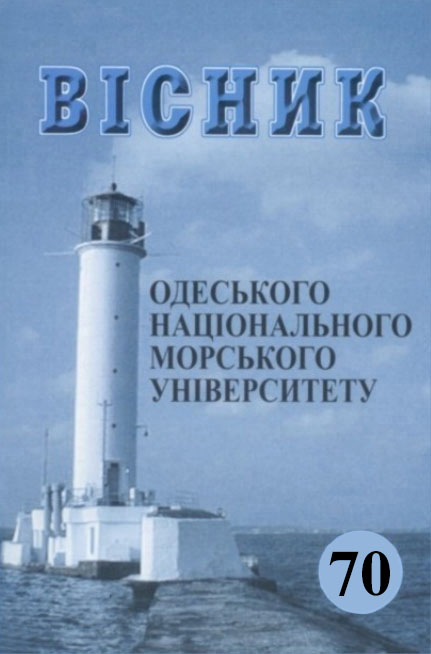Аналіз та оцінка рівня безпеки судна на прикладі багатошарової моделі
##plugins.themes.bootstrap3.article.main##
Анотація
В даній статті проводиться аналіз різних методів оцінки рівня безпеки транспортних суден під час експлуатації. Основою для аналізу є модель «шарів безпеки», яка дозволяє виявити потенційні загрози безпеці на різних рівнях усередині судна. В роботі представлено огляд моделей безпеки які використовуються в судноплавстві та важливість наявності якісних даних для їх розробки, пропонується використання різних методів для оцінки ймовірності виникнення загроз, зокрема пожеж. Також підкреслюється необхідність дотримання стандартів і нормативів у сфері забезпечення безпеки морських суден та надаються рекомендації щодо вдосконалення методів і підходів до забезпечення безпеки, з метою подальшого підвищення рівня експлуатаційної безпеки судна та надійності морських перевезень вантажів.
##plugins.themes.bootstrap3.article.details##
Посилання
2. Liu, R., Liu, G., He, P., Lin, X. (2022). Research on artificial intelligence safety prediction and intervention model based on ship driving habits. MATEC Web of Conferences, 355, 03032. https://doi.org/10.1051/matecconf/202235503032.
3. Spyrou, K., Koromila, I. (2020). A risk model of passenger ship fire safety and its application. Reliability Engineering & System Safety, 200. https://doi.org/10.1016/j.ress.2020.106937
4. Li, J., Wang, G., Guo, Y., Liu, C., Huang, Y., Chen, G. (2022). Assessment of Escape Safety of Cruise Ships Based on Dislocation Accumulation and Social Force Models. Applied Sciences, 12, 7998. https://doi.org/10.3390/app12167998.
5. Hsu, W-K., Kao, J-C. (2021). The safety of ship berthing operations at port dock – a gap assessment model based on fuzzy ahp. International Journal of Maritime Engineering, 159. https://doi.org/10.5750/ijme.v159iA4.1038.
6. Szlapczynski, R., Szlapczynska, J. (2017). Review of ship safety domains: Models and applications. Ocean Engineering, 145C, 277-289. https://doi.org/10.1016/j.oceaneng.2017.09.020.
7. Yakimov, V. (2023). A concept for onboard risk-based information system to ensure the safety of ship operation in ice conditions. AIP Conference Proceedings, 2700, 060001. https://doi.org/10.1063/5.0125036.
8. Onyshсhenko S., Melnyk O. (2021) Probabilistic Assessment Method of Hydrometeorological Conditions and their Impact on the Efficiency of Ship Operation. Journal of Engineering Science and Technology Review, 14 (6), 132-136. https://doi.org/10.25103/jestr.146.15.
9. Onyshchenko, S., Melnyk, O. (2022) Efficiency of Ship Operation in Transportation of Oversized and Heavy Cargo by Optimizing the Speed Mode Considering the Impact of Weather Conditions. Transport and Telecommunication Journal, 23, 1, 73-80. https://doi.org/10.2478/ttj-2022-0007
